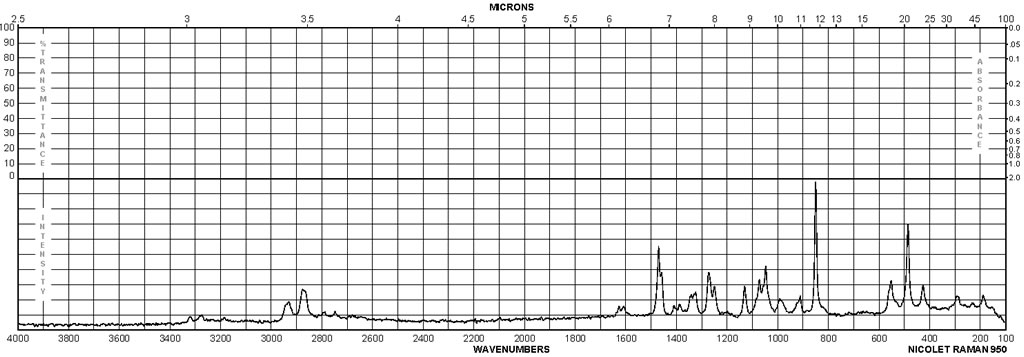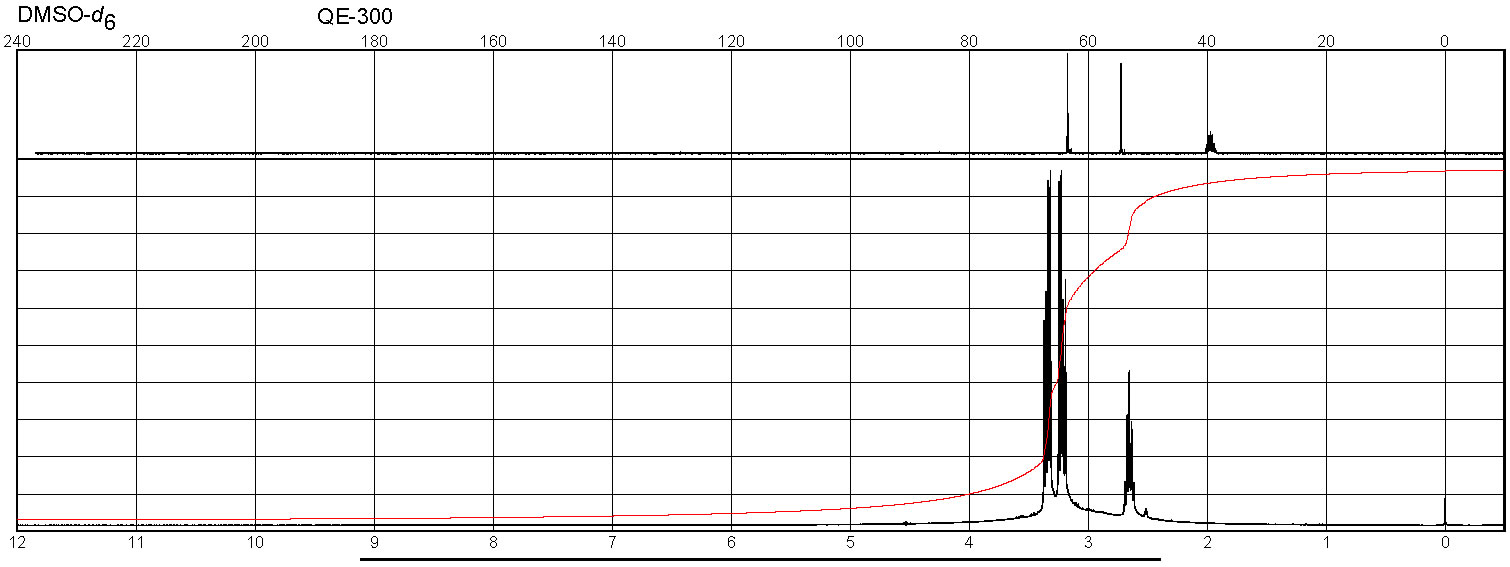2-Amino-1,3-propanediol CAS#: 534-03-2; ChemWhat Code: 86727
Identification
| Product Name | 2-Amino-1,3-propanediol |
| IUPAC Name | 2-aminopropane-1,3-diol |
| Molecular Structure | |
| CAS Registry Number | 534-03-2 |
| EINECS Number | 208-584-0 |
| MDL Number | MFCD00051487 |
| Synonyms | serinol, 2-amino-1,3-propandiol |
| Molecular Formula | C3H9NO2 |
| Molecular Weight | 91.11 |
| InChI | InChI=1S/C3H9NO2/c4-3(1-5)2-6/h3,5-6H,1-2,4H2 |
| InChI Key | KJJPLEZQSCZCKE-UHFFFAOYSA-N |
| Canonical SMILES | C(C(CO)N)O |
| Patent Information | ||
| Patent ID | Title | Publication Date |
| WO2018/104228 | MECHANOCHEMICAL SYNTHESIS OF RADIOGRAPHIC AGENTS INTERMEDIATES | 2018 |
| WO2018/146010 | 2-HETEROARYL-3-OXO-2,3-DIHYDROPYRIDAZINE-4-CARBOXAMIDES FOR THE TREATMENT OF CANCER | 2018 |
| WO2017/202816 | 3-OXO-2,6-DIPHENYL-2,3-DIHYDROPYRIDAZINE-4-CARBOXAMIDES | 2017 |
| EP2774922 | Method for obtaining a functionalized triazine compound and the triazine compound obtained by said method | 2014 |
Physical Data
| Appearance | White to off-white crystalline powder |
| Melting Point | 52-55 °C |
| Boiling Point | 115 – 116 °C |
| Flash Point | 113 °C |
| Refractive index | 1.4891 |
| Solubility | Soluble in water and alcohol |
| Dissociation Exponent (pK) | Temperature (Dissociation Exponent), °C | Solvent (Dissociation Exponent) | Method (Dissociation Exponent) |
| 8.63 | 25 | H2O | potentiometric |
Spectra
| Description (NMR Spectroscopy) | Nucleus (NMR Spectroscopy) | Solvents (NMR Spectroscopy) | Temperature (NMR Spectroscopy), °C | Frequency (NMR Spectroscopy), MHz | Original Text (NMR Spectroscopy) |
| Chemical shifts | 1H | d(4)-methanol | 26.84 | ||
| 13C | chloroform-d1 | 50 | 13C NMR (50 M Hz, CDCl3): 54, 63 |
Route of Synthesis (ROS)

| Conditions | Yield |
| With 5%-palladium/activated carbon; hydrogen In methanol at 75℃; under 22502.3 Torr; for 5h; Pressure; Temperature; Solvent; Experimental Procedure 20percent 2-nitro 1,3-propanediol methanol solution 1250g added 5percent palladium / carbon 3.5g, continuous hydrogen gas 70L, hydrogen pressure 3MPa, 75 ° C for 5 hours to obtain a serinol solution.Palladium/charcoal was filtered off, washed and reused.Step 4: Distill high purity serinol in high vacuumThe serinol solution is pumped into a high-vacuum distillation vessel, evacuated to 40 Pa, and the methanol is distilled and reused.The yield of serinol was 97.2percent. | 97.2% |
| With hydrogen at 15 – 30℃; Autoclave; Experimental Procedure In a 1 L reaction flask, 100 ml of methanol solvent and 113.5 g (1.86 mol) of nitromethane were charged.Then, 390 ml (3.9 mol) of a 30percent aqueous formaldehyde solution having a pH of 9 to 10 adjusted with triethylamine was added dropwise thereto, and the temperature was controlled to be reacted between 0 and 5 degrees for 2 hours.Then, a mixed liquid of 187.8 g (1.86 mol) of triethylamine and 100 ml of pure water was added dropwise, and the temperature was controlled at about 30 degrees to complete the reaction for 15 to 20 hours.The 2-nitro-1,3-propanediol mixed solution after the reaction was transferred to a 2 L autoclave.Further, 15 g of Raney nickel catalyst is added for hydrogenation reaction, the temperature is controlled between 15 and 30 degrees, the reaction pressure is 15-25 kgf/cm2, and the reaction time is about 6 to 10 hours.The post-treatment desolvent and desalting temperature is not more than 90 ° C, and the high vacuum 100 Pa is distilled to obtain a crude product.It was then recrystallized from 303 ml (3.95 mol) of isopropanol.The final dried 2-amino-1,3-propanediol had a weight of 118.5 g and a molar yield of 70percent. | 70% |
| With diethyl ether; aluminium amalgam; water | |
| With hydrogen; oxalic acid; palladium | |
| With hydrogen; platinum(IV) oxide; Co(dmgH)2 In ethanol at 25℃; increase in hydrogenation rate in presence of Co catalyst, another catalyst: H-Co(DG)2Py; |
Safety and Hazards
| Pictogram(s) |  |
| Signal | Danger |
| GHS Hazard Statements | H314: Causes severe skin burns and eye damage [Danger Skin corrosion/irritation] H318: Causes serious eye damage [Danger Serious eye damage/eye irritation] Information may vary between notifications depending on impurities, additives, and other factors. |
| Precautionary Statement Codes | P260, P264, P280, P301+P330+P331, P303+P361+P353, P304+P340, P305+P351+P338, P310, P321, P363, P405, and P501 (The corresponding statement to each P-code can be found at the GHS Classification page.) |
Other Data
| Transportation | UN: 3263; Class: 8; Package: II |
| Under the room temperature and away from light | |
| HS Code | 292219 |
| Storage | Under the room temperature and away from light |
| Shelf Life | 2 years |
| Market Price | USD 50/kg |
| Druglikeness | |
| Lipinski rules component | |
| Molecular Weight | 91.11 |
| logP | -1.947 |
| HBA | 3 |
| HBD | 3 |
| Matching Lipinski Rules | 4 |
| Veber rules component | |
| Polar Surface Area (PSA) | 66.48 |
| Rotatable Bond (RotB) | 2 |
| Matching Veber Rules | 2 |
| Use Pattern |
| Serinol may be used to prepare the artificial nucleic acids. It may be used in the synthesis of N-acylated serinol and C16-serinol affinity gel. |
| Serinol activates toxin production in the attenuated cultures of Helminthosporiumsacchari. Preparation of polyesters derived from serinol is reported. |
| building-block in the synthesis of non-ionic iodinated X-ray contrast media |
| nonaromatic amine for the hair dyeing composition |
| Radiocontrast agent |
Buy Reagent | |
| No reagent supplier? | Send quick inquiry to ChemWhat |
| Want to be listed here as a reagent supplier? (Paid service) | Click here to contact ChemWhat |
Approved Manufacturers | |
| Caming Pharmaceutical Ltd | http://www.caming.com/ |
| Want to be listed as an approved manufacturer (Requires approvement)? | Please download and fill out this form and send back to approved-manufacturers@chemwhat.com |
Other Suppliers | |
| Watson International Limited | Visit Watson Official Website |
Contact Us for Other Help | |
| Contact us for other information or services | Click here to contact ChemWhat |



